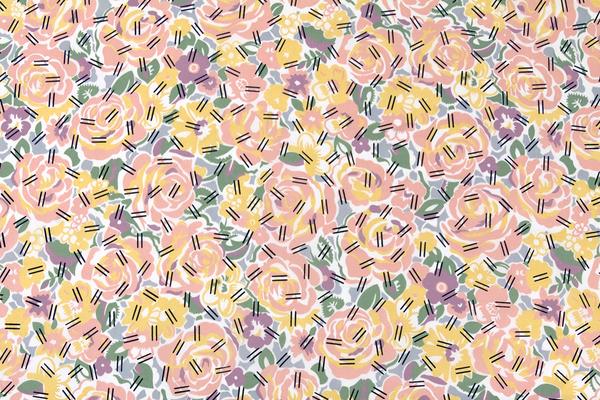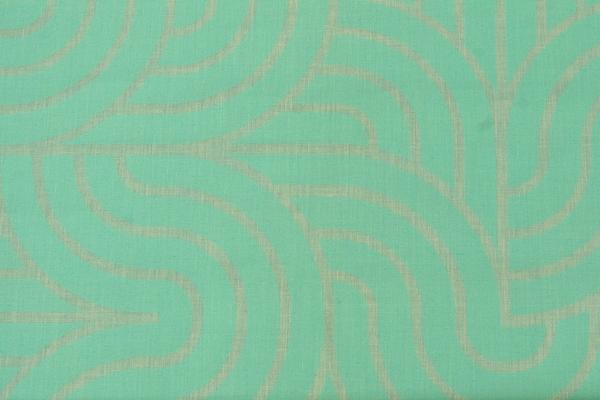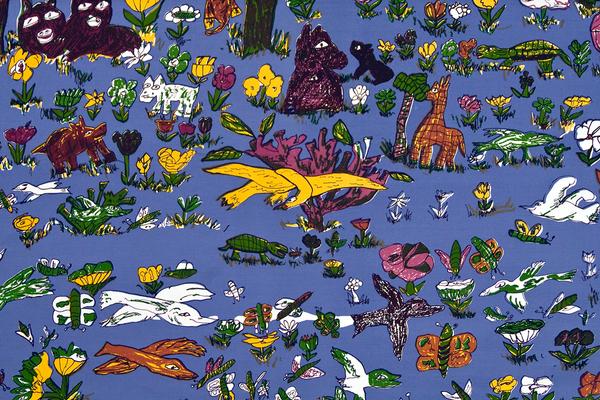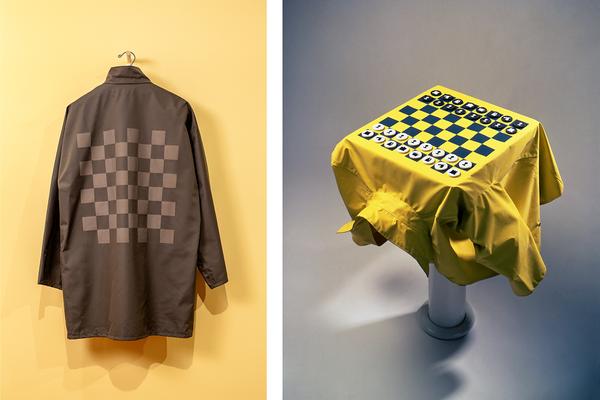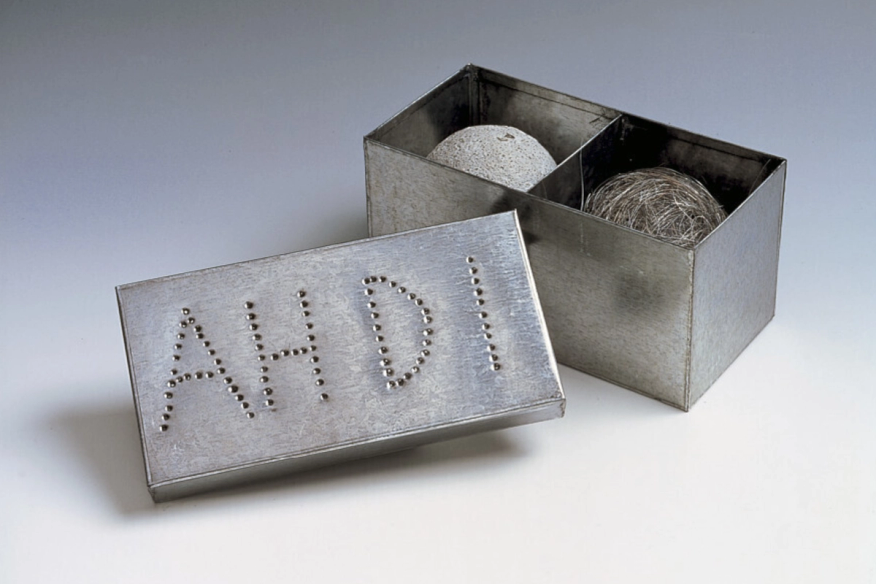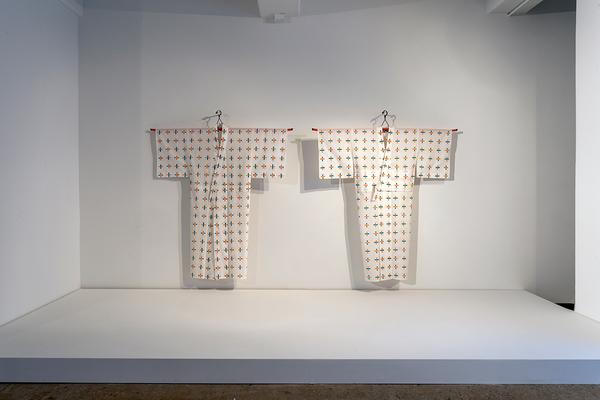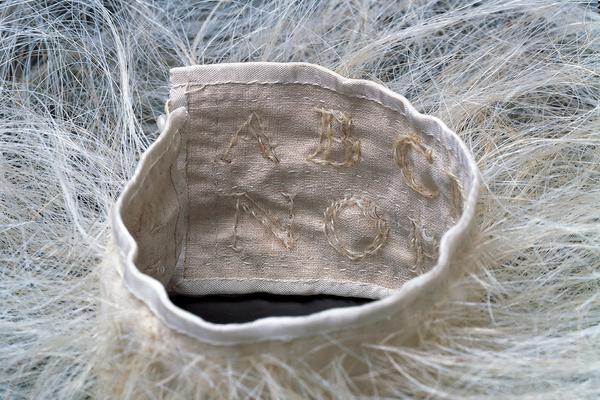About The Store
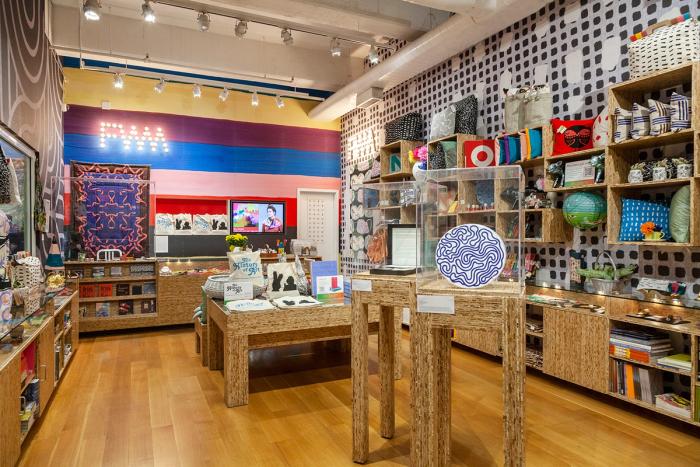
Uniquely artist-made
At the FWM Shop, our emphasis has always been artist-designed, hand-made, and locally sourced. This includes both the products made by our Studio in collaboration with artists from our residency program to sourced products by Philadelphia-based artists and makers.
Our artist-driven projects don’t simply begin in the studio and end in the gallery—they extend seamlessly into the FWM Shop and into your home. In-store and online, you’ll find wearables, handbags, design goods, art books, yardage and exclusive, limited-edition products created in collaboration with renowned artists including Louise Bourgeois, Moe Brooker, Jonathan Lyndon Chase, Mary Heilmann, Jun Kaneko, Kiki Smith, Betty Woodman, and many others.
Each purchase helps to support artistic experimentation at FWM!
Our members save 10% on all products and get exclusive discounts throughout the year.
Yardage
From the Workshop’s inception, our Founder and Artistic Director Marion “Kippy” Bolton Stroud invited artists of all disciplines to our studio to experiment with creating large-scale repeat patterns on fabric. The result of this playful open-ended process has often been the creation of hand-screenprinted yardage featuring an artist’s design. Made onsite in collaboration with our studio of artists, this yardage could be displayed as art or cut for a number of different applications, including handbags, pillows, napkins, tablecloths, and neck ties.
Since our founding in 1977, dozens of artists have produced unique yardage and yardage-made products that are exclusively available at the FWM Shop. This longstanding tradition has engaged artists that include Mary Heilmann, Jun Kaneko, Betty Woodman, Robert Venturi and Denise Scott Brown, and most recently, Jessica Campbell.
Popular and enduring, many of these designs have been reprinted over the years to meet the demand of artists, artisans, designers, and makers who have adapted them for their own projects.
This 1983 yardage by Robert Venturi and Denise Scott Brown was modified from a floral tablecloth belonging to an associate’s grandmother with an overlay pattern of dashes. Venturi reflected that the results involved "dramatic contrasts of scale, rhythm, color, and association."
Venturi, Scott Brown & Associates, in collaboration with The Fabric Workshop and Museum, Philadelphia, Grandmother, 1983. Pigment on cotton sateen. 56 inches (width). Photo credit: Carlos Avendaño
Artists Editions
FWM has a long history of collaborating with artists to produce limited edition artworks (also called multiples). During these collaborations, FWM fully supports the development and production of these editions, which are made available for purchase in-store and online to help raise essential funds for future projects.
Always Surprising
FWM approaches the concept of creating a multiple without preconceived notions of what form the artwork should take. Often these multiples are related to work created for an artist’s exhibition during their residency but sometimes the editioned works stand alone as a previously unexplored idea for the artist.
Past editions have spanned from functional objects (like Joan Jonas’s Untitled lamp) to interactive sets (such as Rose B. Simpson’s deck of Guidance Cards), from wearables (like Sarah Sze’s Nightside and Waterside scarves) to sculptures that are either toy-like (such as Jayson Musson’s Ollie doll) or more enigmatic (like Ann Hamilton and David Ireland’s Untitled box). Just like the exhibitions developed through our residency program, you never quite know what to expect, even if you think you know the artist’s work.
In 2020, with the generous support of The Pew Center for Arts & Heritage, FWM formalized this program as Shopworks.
With a sixty-four squared chess board printed on the back and 32 plexiglass chess pieces tucked inside its front pockets, the wearer of Ecke Bonk’s jacket will be ready to challenge an opponent anytime, anywhere. The artist began designing this edition while conducting research for his 1989 publication on Marcel Duchamp’s portable museum multiple, Box in a Valise.
Ecke Bonk, in collaboration with The Fabric Workshop and Museum. “Chess Jacket (Checkett),” 1987–1991. Silkscreen on Gore-Tex fabric and plexiglass chess pieces, 38 x 67 inches. Edition of 32. Sponsored and supervised by W.L. Gore & Associates, Munich, Germany.
